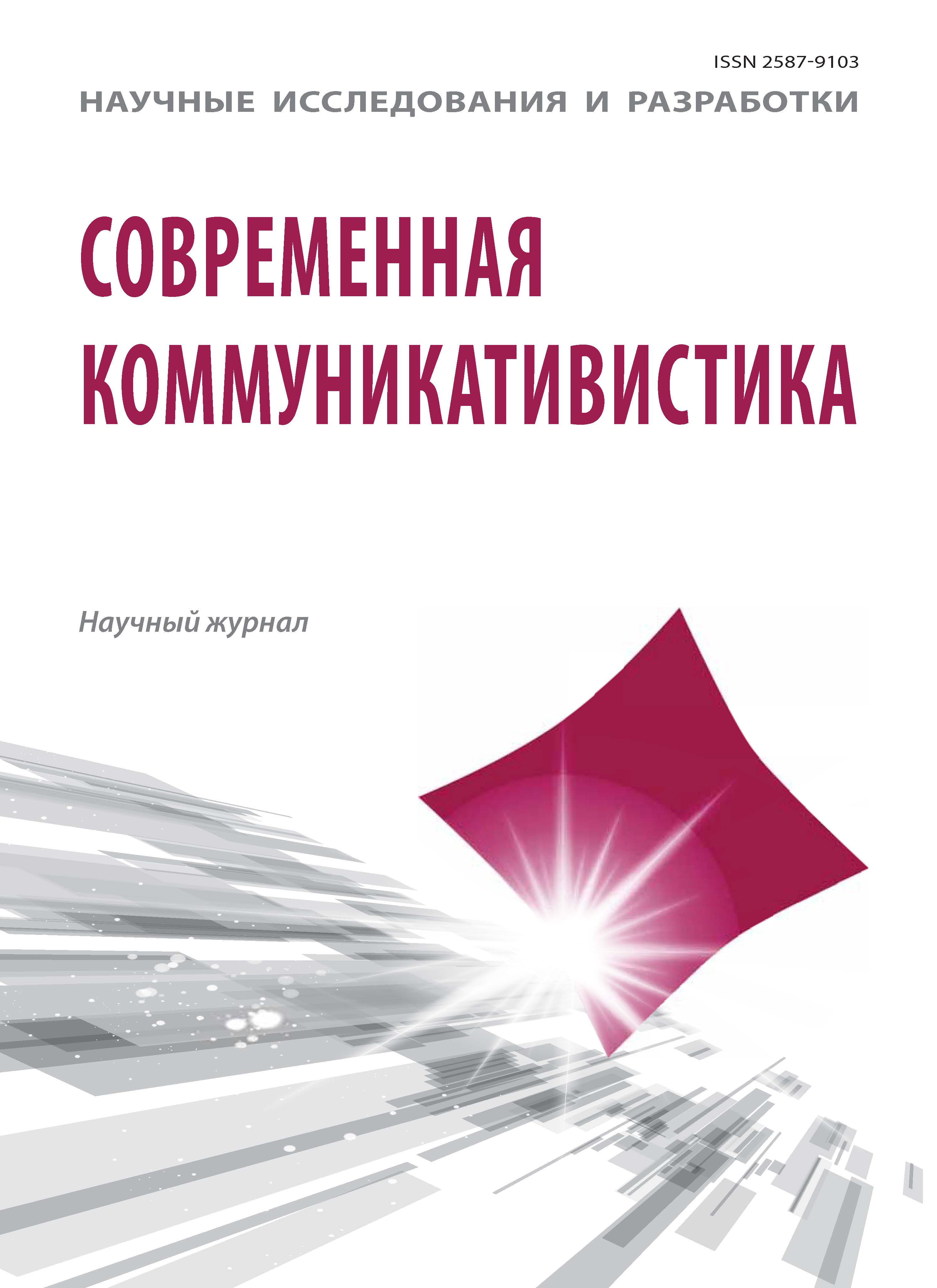Omsk, Omsk, Russian Federation
VAC 24.00.01 Теория и история культуры
UDK 81 Лингвистика. Языкознание. Языки
The article focuses on the inclusion of the external image of a person in communication practices. The authors study variants of art activities aimed at adapting the existing external image of a person to various socio-cultural situations. Communicative practices of using art design in shaping the external image of a person are positioned as" flexible " image models recommended for communication in different communities. The external image of a person is considered as a means that provides instant information exchange between communicants of various social groups. The visual components of the external image of a person that affect the translation of socio-cultural information, such as clothing and hairstyle, are indicated. The methods of art design in modern culture are defined as creative, contributing to the formation of a visual image that participates in the unification of social groups. It is established that the methods of art design, in the context of designing the external image of a person, affect the purposeful formation and adaptation of an image that translates belonging to a social group. Based on the results of the research, recommendations are presented for the choice of art design methods in the process of designing the external image of a person, taking into account the communication goals of representatives of different social groups.
communication practices; art design; methods; design; external image of a person; socio-cultural communication; visualization
1. Belousova Yu. V. Genezis obraza i ego funkcionirovanie v mediaprostranstve. SPb.: «Aleteyya», 2015. 130 s.
2. Blagova T.Yu. Kreativnye metody dizayna v proektirovanii ob'ektov dekorativnoprikladnogo iskusstva: ucheb.-metod.posobie. Blagoveschensk: Izd-vo AmGU, 2013. 57 s. il.
3. Bystrova T.Yu. Vesch'. Forma. Stil'...: Vvedenie v filosofiyu dizayna. Ekaterinburg: Kabinetnyy uchenyy, 2018. 384 s.
4. Bystrova T. Yu. Zachem dizaynu kul'turologiya // Mezhdunarodnyy zhurnal issledovaniy kul'tury. SPb.: «Eydos». 2016. 4 (25). S. 5-15
5. Bystrova T. Yu. Filosofiya dizayna: ucheb.-metod.posobie. 2-e izd., pererab. Ekaterinburg: Izd-vo Ural. un-ta, 2015. 128 s.
6. Volodina K.A. Istoricheskiy aspekt stanovleniya kategorii «obraz» v psihologicheskoy nauke [Elektronnyy resurs]. URL: http://shgpi.edu.ru/files/nauka/vestnik/2014/2014-3-21.pdf (data obrascheniya: 15.04.2020).
7. Nauka vizual'noy kommunikacii / FDF group / [Elektronnyy resurs]. URL: https://fdfgroup.ru/poleznaya-informatsiya/stati/nauka-vizualnoy-kommunikatsii/ (data obrascheniya: 20.04.2020).
8. Poplevina V.A. Nauchnye issledovaniya mody kak social'no-kul'turnogo yavleniya// Social'no-ekonomicheskie yavleniya i processy. 2015. T. 10. №6. S. 162-170
9. Pochepcov G.G. Teoriya kommunikacii. M.: Refl-buk, 2001. 656 s.
10. Svetlichnaya I. V. Vliyanie stilya pricheski na processy kommunikacii // Obschestvo: filosofiya, istoriya, kul'tura. 2018. № 11 (55). S. 156-163.
11. Svetlichnaya I. V. Pricheska kak fenomen kul'tury i sredstvo sociokul'turnoy kommunikacii: dis. … kand. kul'turologii: 24.00.01. Chelyabinsk, 2019. 184 s.
12. Contreras J. I. (2019). Playing with pattern. Aesthetic communication as distributed cognition. Aisthesis. Pratiche, Linguaggi E Saperi dell’estetico, 12 (1), 27-39. Available at://doi.org/10.13128/Aisthesis-25619
13. Floridathe R. Rise of the creative class, revisiteda. New York: Member of the Perseus Books Group, 2012. 483 p.
14. Forsey J. (2014). The Promise, the Challenge, of Everyday. Aesthetics. Pratiche, Linguaggi E Saperi dell’estetico. 7(1). 5-21. Available at: https://oajournals.fupress.net/index.php/aisthesis/article/view/828
15. Fuchs. C. Raymond Williams' communicative materialism // European journal of cultural studies. 2017. V 20 (6). p. 744-762. DOI:https://doi.org/10.1177/1367549417732998
16. Gong S. Innovative Research on the Relationship between Visual Communication Art Design and Cultural Industry Development. 3RD International conference on education, management and social science. Xian, 2019, pp. 245-250. DOI:https://doi.org/10.2991/mcei-17.2017.57
17. Kukhta, M., Pelevin, Y. The Specifics of Creating Emotional Comfort by Means of Modern Design. Proceedings of the international conference on research paradigms transformation in social sciences. Tomsk, pp. 199-203. DOI:https://doi.org/10.1016/j.sbspro.2014.12.510
18. Ledin P; Machin D. A discourse-design approach to multimodality: the visual communication of neoliberal management discourse // Social semiotics. 2016. V 26 (1). p.1-18/ DOI:https://doi.org/10.1080/10350330.2015.1089652
19. Matteucci G., Di Stefano E., & Mecacci A. (2014). Presentazione. Aisthesis. Pratiche, Linguaggi E Saperi dell’estetico. 7 (1). 3-4. Available at: https://oajournals.fupress.net/index.php/aisthesis/article/view/827
20. Taeke M. de Jong. The role of art in science. Metu journal of the faculty of architecture. 2010. V 27 (1). pp. 23-44. DOI:https://doi.org/10.4305/METU.JFA.2010.1.2
21. Tibor S., Balinta Paul Pangaro. Design space for space design: Dialogs through boundary objects at the intersections of art, design, science, and engineering. Acta Astronautica. 2017/ V 134. pp. 41-53 Available at: https://doi.org/10.1016/j.actaastro.2017.01.029







